An electric motor winding is a coil made up of a conductor wire such as copper or aluminum and used to produce an electromagnetic field inside the machine. The motor winding is considered the heart of an electric motor as it provides the necessary energy to drive a mechanical load.
What is an Electric Motor?
An electric motor is an electrical machine that converts electrical energy into mechanical energy. It drives mechanical loads such as pumps, fans, hoists, cranes, etc.
An electric motor consists of the following major parts:
- Rotor – A moving or rotating part.
- Stator – A static or stationary part that cannot move or rotate.
- Air Gap – A small space between the stator and rotor of the electric motor.
- Motor Windings – Coils of copper or aluminum wires act as electromagnets.
An electric motor receives electrical energy from an external source of electricity and produces a magnetic field with the help of windings. This magnetic field produces a torque in the rotor that rotates it. The rotational mechanical is then utilized to operate the mechanical loads. This is how an electric motor works.
This article is primarily meant to help readers understand motor windings and their types. So, let’s focus on that.
What is a Motor Winding?
Electric motors have coils of conductor wires like copper or aluminum. These coils are called motor windings. The primary function of motor windings is to create a magnetic field. Hence, they basically work as electromagnetic, i.e., convert electrical energy into a magnetic field. This magnetic field is then used to rotate the rotor.
In short, we can say that a motor winding is a part of an electric motor that converts electricity into motion.
Motor winding is an essential part of the motor used for appliances such as fans, heaters, coolers, air conditioners, and pumps.
Types of Motor Winding
Based on the motor part on which the winding is placed, there are two types of electric motor winding:
- Stator Winding
- Rotor Winding
Based on the connection, the motor windings are also classified into two types, namely,
- LAP Winding
- Wave Winding
In AC motors, the windings can be classified into the following two types:
- Distributed Winding
- Concentrated Winding
Let us discuss each type of motor winding one by one in detail.
1. Winding Types Based on their placement on the stator and rotor
(1a). Stator Winding
As the name implies, the motor winding placed on the non-moving or static part called the stator is called the stator winding. When current flows through it, the stator winding produces a magnetic field.
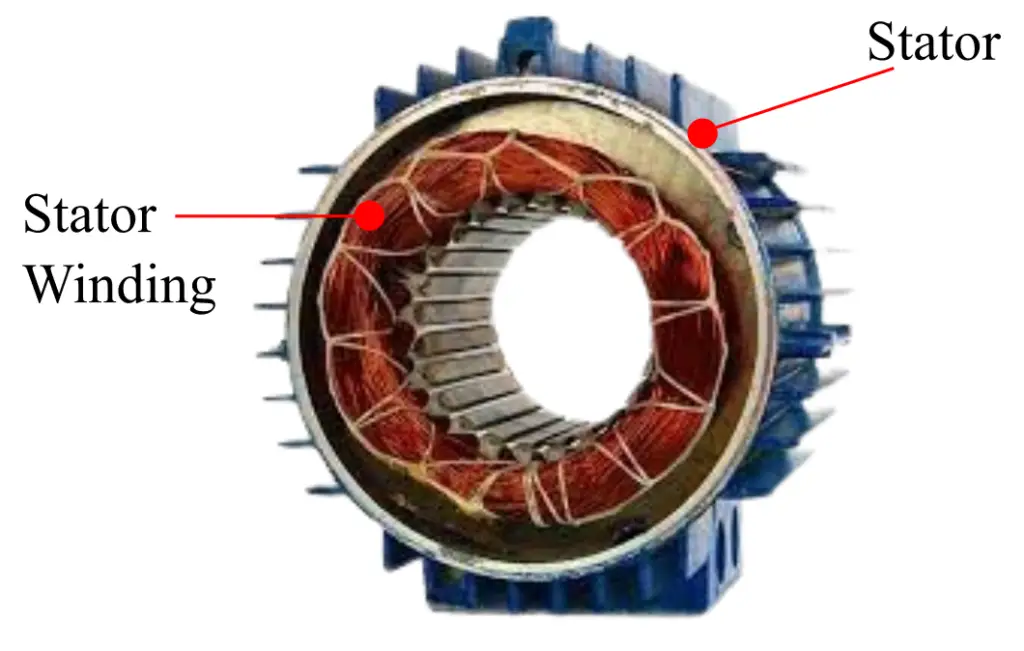
In DC motors, the stator winding is energies from an external DC power source. It creates static north and south poles in the field system of the DC motor.
In AC motors, the stator winding produces a rotating magnetic field. Depending on the type of the motor, it is energized from a single-phase AC supply or a three-phase AC supply.
(1b). Rotor Winding
The motor winding placed on the moving or rotating part of the electric motor is known as rotor winding. This winding freely rotates with the rotor.
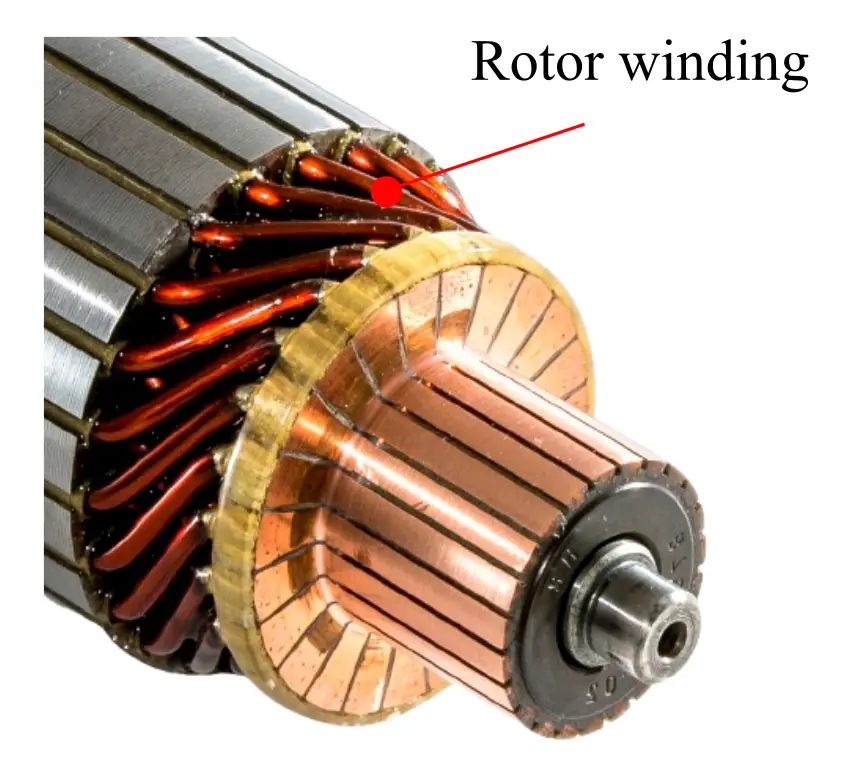
The rotor winding creates a magnetic field that interacts with the stator’s magnetic field to spin the rotor.
In DC motors, the rotor winding acts as the armature winding and produces the working torque in the machine. The rotor winding of a DC motor is energized from an external source of DC power through an assembly of commutator and carbon brushes.
In induction motors, the rotor winding can be of two types: phase-wound rotor winding and squirrel-cage rotor winding. The phase-wound rotor winding is used in three-phase slip-ring induction motors. It consists of three-phase coils of copper wire wound on the rotor core. The winding is connected to external resistors to increase the motor’s starting torque. On the other hand, the squirrel-case rotor winding is used in squirrel-cage induction motors and is made up of copper bars.
In synchronous motors, the rotor winding is a wound-type winding energized by an external DC power source.
2. Types of Winding Based on Winding Connection
(2a). LAP Winding
LAP winding is a type of armature winding in which the number of parallel paths equals the number of poles. The ends of each armature coil are connected to the adjacent commutator segments.
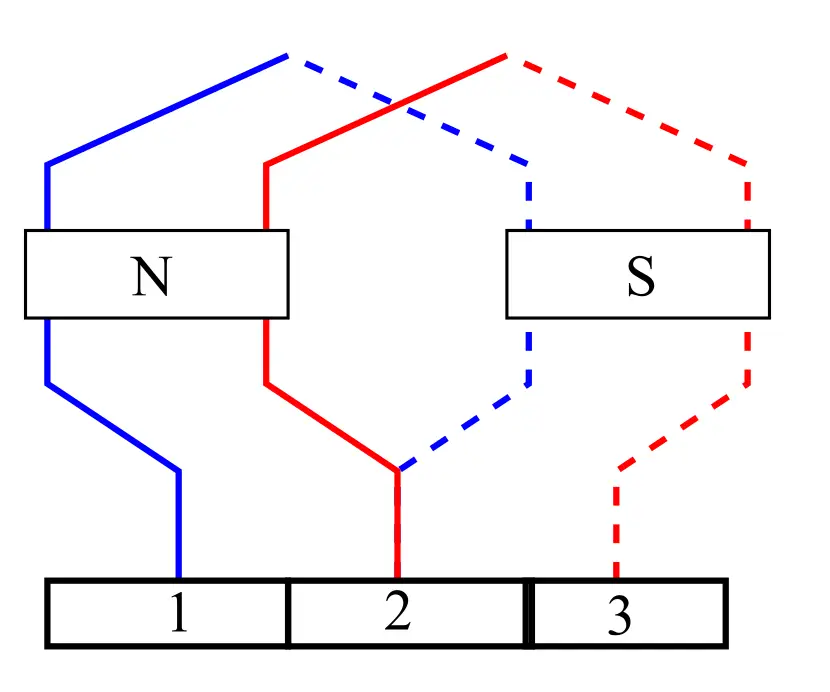
The number of parallel paths and carbon brushes are equal in LAP winding. The carbon brushes are equally divided into positive and negative polarities.
LAP windings have multiple paths for the flow of electric current. Hence, they are preferred in high current applications.
(2b). Wave Winding
Wave winding is another type of armature winding that has only two parallel paths between the positive and negative carbon brushes.
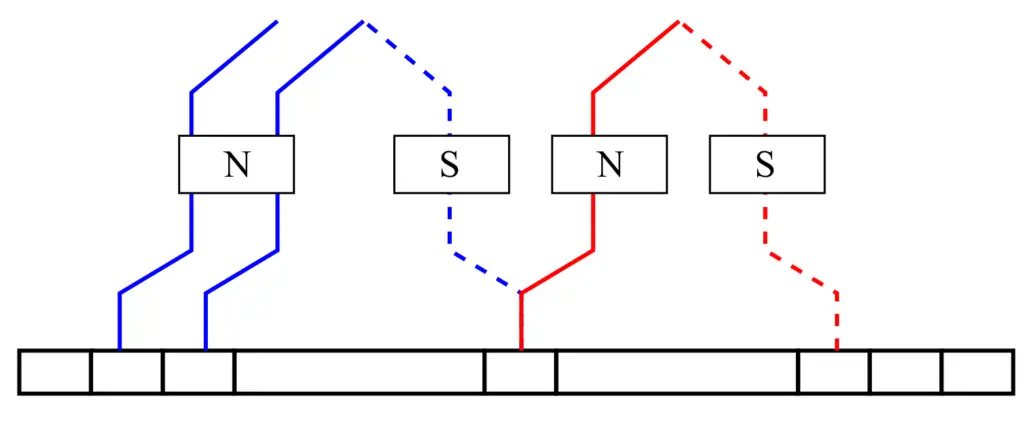
In the wave winding, one coil’s finish end is connected to another coil’s start end.
In the case of wave winding, the coils are connected in a manner that there are only two parallel paths. In this winding, multiple coils are connected in series; hence, this winding is suitable for high-voltage applications.
3. Winding Types Based on Winding Placement in Slots
(3a). Distributed Winding
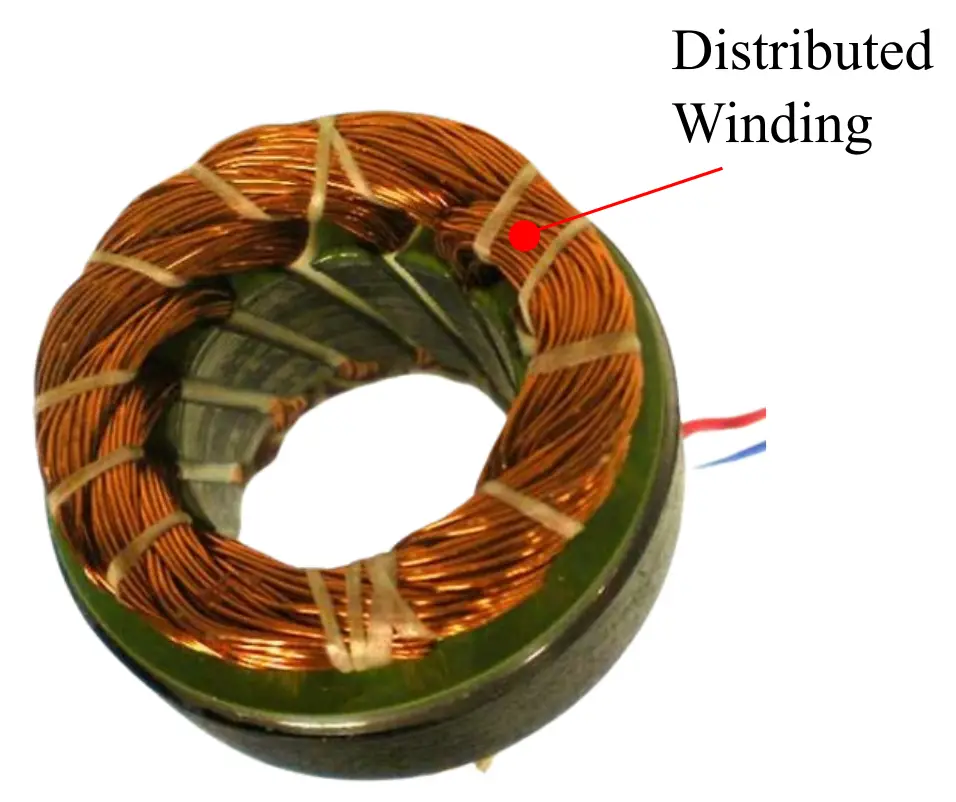
The distributed winding is mainly used in three-phase induction motors and synchronous motors. It is named so because the coils of it are distributed along the air gap in the machine.
In the case of distributed motor winding, the number of poles is not equal to the number of slots.
(3b). Concentrated Winding
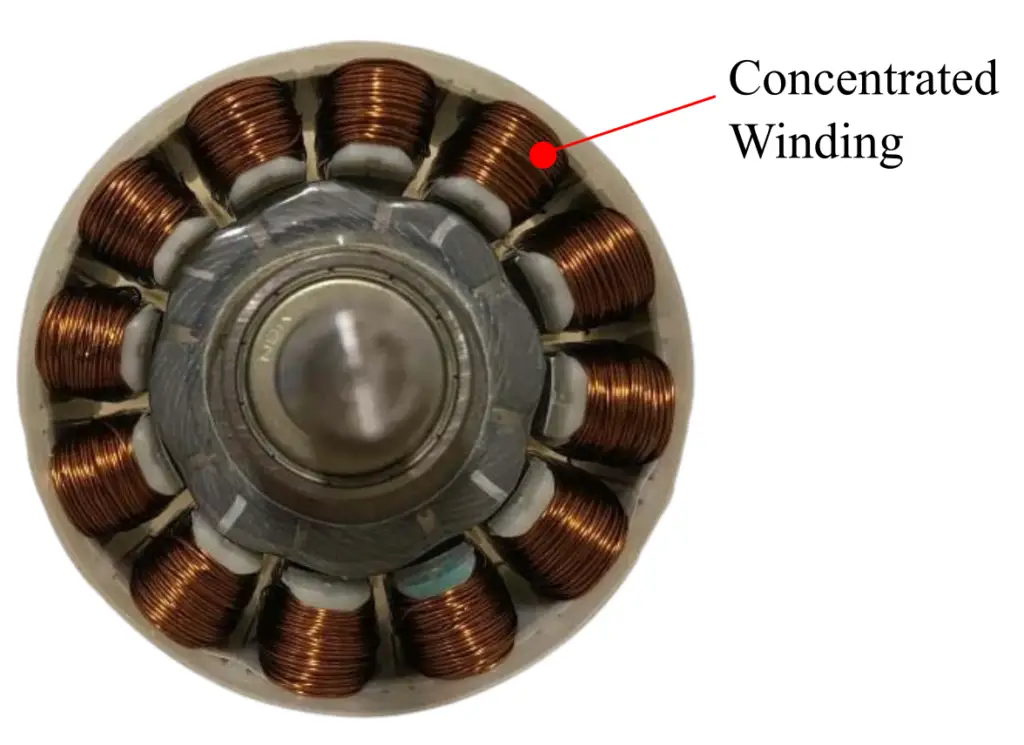
A concentrated winding is a type of electric motor winding in which all coil turns are placed in a single slot.
Hence, in the concentrated winding, the number of poles equals the number of slots.
This type of motor winding is mainly used in applications where a strong and localized magnetic field is produced.
Conclusion
In conclusion, motor windings are an important part of an electric motor. Their primary function is to produce the magnetic field in the machine. Depending on the specifications, motor windings are classified into several different types, such as stator winding, rotor winding, lap winding, wave winding, etc.
In this article, I have explained the concepts of commonly used motor windings and a basic definition of motor winding.